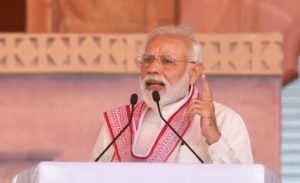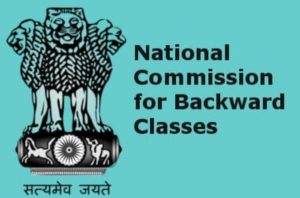 Malaysia has ratified the Rome Statute making it the 124th State party to the International Criminal Court (ICC). Even though Malaysia had helped to negotiate the Rome Statute, it has been long been reluctant to ratify it. Ratification after 20 years is seen as a welcome move. Malaysia has ratified the Rome Statute making it the 124th State party to the International Criminal Court (ICC). Even though Malaysia had helped to negotiate the Rome Statute, it has been long been reluctant to ratify it. Ratification after 20 years is seen as a welcome move. |
Why Malaysia has acceded to the Rome Statute after 20 years?
|
 China has increased its defence budget by 7.5 per to $177.61 billion up from last year’s $165 billion. The 2019 Defence Budget of China stood at 1.19 trillion yuan (about $177.61 billion) which is three times the Indian Defence Budget. China has increased its defence budget by 7.5 per to $177.61 billion up from last year’s $165 billion. The 2019 Defence Budget of China stood at 1.19 trillion yuan (about $177.61 billion) which is three times the Indian Defence Budget. |
China’s Defence Budget
|
| Increases Budget a Cause of Worry? China is demonstrating a more posture towards Taipei and China is facing competing claims in the South China Sea from Vietnam, the Philippines, Brunei, Malaysia and Taiwan together with a territorial dispute with historic rival Japan in the East China Sea. Hence increased Defence Budget of China may be a precursor to a more aggressive stance against its neighbours. China has termed the increase in the defence budget as reasonable and appropriate aimed at meeting the country’s demand in safeguarding national security and military reform with Chinese characteristics. China also argues that China’s defence budget at 1.3 per cent of the GDP is much less than major developing countries which spend two per cent GDP on their defence. China also states that whether a country is a military threat to others or not is not determined by its increase in defence expenditure, but by the foreign and national defence policies it adopts. |
 President Trump notified the Congress his intent to terminate trade benefits for both India and Turkey under the Generalized System of Preference (GSP) eligibility criteria. President Trump notified the Congress his intent to terminate trade benefits for both India and Turkey under the Generalized System of Preference (GSP) eligibility criteria. |
India and GSP
|
Why the US is planning to withdraw GSP for India?
|
 India has nominated member of Niti Ayog, Ramesh Chandra to head Food and Agricultural Organisation. Ramesh Chand’s candidature is challenged by Qu Dongyu of China, Medi Moungui of Cameroon, Catherine Geslain-Laneelle of France and Davit Kirvalidze of Georgia. To get elected to the post of Director-General of FAO, the candidate needs to secure a simple majority of the 194 members. The only Indian to head the FAO is Binay Ranjan Sen, who was the Director-General from 1956 to 1967. India has nominated member of Niti Ayog, Ramesh Chandra to head Food and Agricultural Organisation. Ramesh Chand’s candidature is challenged by Qu Dongyu of China, Medi Moungui of Cameroon, Catherine Geslain-Laneelle of France and Davit Kirvalidze of Georgia. To get elected to the post of Director-General of FAO, the candidate needs to secure a simple majority of the 194 members. The only Indian to head the FAO is Binay Ranjan Sen, who was the Director-General from 1956 to 1967. |
Food and Agriculture Organisation
The Food and Agriculture Organization (FAO) is a specialized agency of the United Nations which leads international efforts to defeat hunger. FAO aims to achieve food security for all and make sure that people have regular access to enough high-quality food to lead active healthy lives.
Food and Agriculture Organisation (FAO) was established as the specialised agency in 1945 at the first session of the United Nations and the temporary headquarters of the FAO was located at Washington in the US and the headquarters was moved to Rome, Italy in the year 1951. Priority areas of FAO in the fight against hunger are:
|
 The Appointment Committee of the Cabinet has approved the appointment of P V Ramesh appointed as the director-general of the National Archives of India. Currently, he is serving as the Chairman and Managing Director (CMD) of Rural Electrification Corporation. The Appointment Committee of the Cabinet has approved the appointment of P V Ramesh appointed as the director-general of the National Archives of India. Currently, he is serving as the Chairman and Managing Director (CMD) of Rural Electrification Corporation. |
| National Archives of India The genesis of National Archives of India can be traced to the traced to the report of Sandeman, the Civil Auditor who had stressed the need of relieving the offices of congestion by the destruction of the papers of routine nature and transfer of all valuable records to a ‘Grand Central Archive’. In 1889 Professor G.W. Forrest of Elphinstone College, Bombay entrusted the job of examining the records of the Foreign Department of the Government of India made a strong plea for transferring all records of the administration of East India Company to a Central Repository This led to the establishment of Imperial Records Department (IRD) on 11 March 1891 in the Imperial Secretariat Building at Calcutta (Kolkata). In 1911 the IRD was shifted to Delhi. After the Independence, the government of India rechristened IRD as the National Archives of India with Director of Archives as its head and in the year 1990 the office of the Director of Archives was redesignated as Director General of Archives. At present National Archives of India is an attached office under the Ministry of Culture and has a Regional Office at Bhopal and three Records Centres at Jaipur, Puducherry and Bhubaneswar. |
 President Ram Nath Kovind has nominated Justice SA Bobde of the Supreme Court as Executive Chairman of National Legal Services Authority (NALSA). The post is currently held by Justice AK Sikri who is due to retire on 6th March. President Ram Nath Kovind has nominated Justice SA Bobde of the Supreme Court as Executive Chairman of National Legal Services Authority (NALSA). The post is currently held by Justice AK Sikri who is due to retire on 6th March. |
| National Legal Services Authority (NALSA) The National Legal Services Authority (NALSA) is a statutory body constituted under the Legal Services Authorities Act, 1987 to provide free Legal Services to the weaker sections of the society. NALSA fulfils the provisions under the Article 39A of the constitution which provides for free legal aid to the poor and weaker sections of the society, to promote justice on the basis of equal opportunity. The Chief Justice of India is the Patron-in-Chief and the Senior most Judge of the Supreme Court of India is the Executive Chairman of the Authority. |
Objectives of NALSA
|
 The World Bank will provide a $250-million loan for the National Rural Economic Transformation Project (NRETP). National Rural Economic Transformation Project is a new sub-component under the Deendayal Antyodaya Yojana – National Rural Livelihoods Mission (DAY-NRLM) of the Ministry of Rural Development. The World Bank will provide a $250-million loan for the National Rural Economic Transformation Project (NRETP). National Rural Economic Transformation Project is a new sub-component under the Deendayal Antyodaya Yojana – National Rural Livelihoods Mission (DAY-NRLM) of the Ministry of Rural Development. |
National Rural Economic Transformation Project
|
 The National Annual Rural Sanitation Survey 2018-19 was conducted by an Independent Verification Agency under the World Bank support project to the Swachh Bharat Mission (Grameen). The National Annual Rural Sanitation Survey 2018-19 was conducted by an Independent Verification Agency under the World Bank support project to the Swachh Bharat Mission (Grameen). |
Findings of the Survey
|
| Swacch Bharat Mission Gramin As per the data from the Ministry of Drinking Water and Sanitation which is the implementing ministry of Swacch Bharat Mission Gramin, about 500 million people have stopped defecating in the open. As a result, the number of people defecating in open is down from 550 million at the beginning of the programme to less than 50 million today. Under the Swacch Bharat Mission Gramin, 9 crore toilets have been built across rural India under the Mission. Under the Mission over 5.5 lakh villages and 615 districts have been declared ODF, along with 30 ODF States and Union Territories. |
 PM Narendra Modi launched the indigenously-developed National Common Mobility Card (NCMC) to enable people to pay multiple kinds of transport charges, including metro services and toll tax, across the country. Dubbed as ‘One Nation One Card’, the inter-operable transport card would allow the holders to pay for their bus travel, toll taxes, parking charges, retail shopping and even withdraw money. PM Narendra Modi launched the indigenously-developed National Common Mobility Card (NCMC) to enable people to pay multiple kinds of transport charges, including metro services and toll tax, across the country. Dubbed as ‘One Nation One Card’, the inter-operable transport card would allow the holders to pay for their bus travel, toll taxes, parking charges, retail shopping and even withdraw money. |
| Source: Economic Times |
 Bhagwan Lal Sahni has been appointed as the chairman of the newly constituted National Commission for Backward Classes (NCBC). Kaushalendra Singh Patel, Sudha Yadav and Achary Talloju have been appointed as members of the commission. Their names were approved by President Ram Nath Kovind. The NCBC was given constitutional status by Parliament in 2018, after repealing the National Commission for Backward Classes Act, 1993. Bhagwan Lal Sahni has been appointed as the chairman of the newly constituted National Commission for Backward Classes (NCBC). Kaushalendra Singh Patel, Sudha Yadav and Achary Talloju have been appointed as members of the commission. Their names were approved by President Ram Nath Kovind. The NCBC was given constitutional status by Parliament in 2018, after repealing the National Commission for Backward Classes Act, 1993. |
| Source: Business Standard |
You need to login to perform this action.
You will be redirected in
3 sec
